Do You Think Uber and Lyft Will Ever Be Profitable?

While the tech industry does have firms pushing useful applications and products, it’s quite possibly the most disingenuous business sector of the modern age. Companies selling literally nothing more than false promises routinely see multi-billion-dollar valuations. The necessary hardware is always just “years away” and sold to investors who haven’t realized it was never real in the first place. A significant portion of the industry is also little more than reorganizing payment structures or access to services for the sake of convivence, making sure you’re locked into a plan that keeps your financial and personal details perpetually on file. But sometimes this actually results in worthwhile solutions which may (or may not) be capable of turning a legitimate profit.
Ride-hailing firms are probably one of the earliest and best examples of all the above. Uber and Lyft both lost a lot of money in 2020 but both remain convinced that profitability is just over the next hill. But there are plenty of obstacles littering the incline.
Uber’s revenue fell from $13 billion in 2019 to $11.1 billion in 2020, as Lyft went from $3.6 billion to $2.4 billion in the same timeframe. While we can blame much of that on demand being suppressed by the virus of unspecified origins, both companies were branching out into services that thrived during the pandemic (specifically food delivery) and weren’t on track to become profitable anyway.
But that’s allegedly changing. Uber even has redefined adjusted EBITDA for this year to ensure that it can tell investors at the end of 2021 that it’s profitable — provided you ignore twelve different expense categories the company earmarked in advance. Lyft’s goals were similar and the company has been streamlining itself and increasing fares to make sure it has its adjusted earnings profitability by the third quarter of 2020. Unfortunately, now that everyone in the media is screeching about the Delta variant, massaging those predictions into something rosy could become substantially harder.
The European Union has begun implementing vaccine passports for certain forms of travel, despite lockdown protests becoming routine over the summer. Other nations are also considering instituting new restrictions on the population as a way to combat the latest COVID strain that’s getting everyone’s panties in a twist. Regardless of how foolish or sound you happen to find those restrictions to be, they remain poised to hamstring sectors of the economy on a global scale.
“The continued uncertainty around the pandemic’s trajectory will suppress both supply and demand for rideshare services until we see what the Delta variant’s death toll really is,” Forrester analyst James McQuivey told Reuters this week.
Suppressed demand is something ride-hailing companies have already attempted to contend with by instituting new COVID safety rules on both their customers and drivers. But this may have also had unintended ramifications. Rules stipulating that vehicles had to have their windows down drove away many would-be customers during the colder months. Your author effectively abandoned ride-hailing over the updated protocols, deciding it was more enjoyable to spend the extra time and money to find parking than be subjected to freezing winds with someone that likely had their mask around their chin anyway and was expecting to be tipped upon arrival.
But it wasn’t just customers that Uber and Lyft lost in 2020. It was also losing employees (which the platforms reference as “independent contractors” so they’re not made eligible for benefits) who realized the money wasn’t going to be there when everyone was staying home. While some transitioned to delivery services like Uber Eats, many simply stopped driving altogether. Now the sector is confronting a pretty massive driver shortage, mimicking what we’ve seen among the long-haul trucking industry.
From Reuters:
During the second quarter, when it appeared the coronavirus threat was receding, Uber and Lyft were focused on luring drivers back with large pay incentives.
Analysts at KeyBanc Capital Markets in a note said the incentives were proving effective at getting more drivers on the platforms, allowing the companies to start strategically dialing back the extra pay.
KeyBanc said its proprietary data showed guaranteed fares per ride dropped 5.5 [percent] to $14.78 from June to mid-July.
Public data from regulators in Chicago and New York City, two of the companies’ largest markets, shows a continued growth in trips and vehicles in recent months.
Heartening but perhaps a little short-sighted. Those seeking full-time employment as drivers could probably be better served by getting into the trucking industry. Cargo delivery, particularly that which requires additional certifications, is absolutely desperate to refill its ranks after 2020 and has been raising rates accordingly with benefits. Many truckers retired last year and applications rates have declined as the general assumption was that these jobs would soon be replaced by autonomous vehicles. While that may be true in the long term, AVs remain nowhere near ready for public consumption. The little delivery bots you sometimes see milling around college towns are tailed by a human supervisor on a scooter or bicycle and their larger counterparts require constant adult supervision to ensure they can’t run amok.
Uber spent well over $1 billion on self-driving technologies itself. But ultimately sold off that unit to Aurora after its development efforts greatest achievement was being the first company to kill a pedestrian with an autonomous test vehicle. Venture capitalist Bill Gurley (one of Uber’s earliest supporters who was rumored to have a hand in ousting former CEO Travis Kalanick) called the whole program a mistake in February.
“We probably burned $2.5 billion on autonomous that was a waste of money,” Gurley said at the time, adding that he wished the money had still been around during the pandemic to invest more heavily into Uber Eats.
Ridership is presumed to increase over the next few months, particularly if COVID protocols are left lax. But the core business has been totally eclipsed by food delivery. It makes one wonder if any ride-hailing firm has the business model necessary to actually make money.
[Image: Jonathan Weiss/Shutterstock]

A staunch consumer advocate tracking industry trends and regulation. Before joining TTAC, Matt spent a decade working for marketing and research firms based in NYC. Clients included several of the world’s largest automakers, global tire brands, and aftermarket part suppliers. Dissatisfied with the corporate world and resentful of having to wear suits everyday, he pivoted to writing about cars. Since then, that man has become an ardent supporter of the right-to-repair movement, been interviewed on the auto industry by national radio broadcasts, driven more rental cars than anyone ever should, participated in amateur rallying events, and received the requisite minimum training as sanctioned by the SCCA. Handy with a wrench, Matt grew up surrounded by Detroit auto workers and managed to get a pizza delivery job before he was legally eligible. He later found himself driving box trucks through Manhattan, guaranteeing future sympathy for actual truckers. He continues to conduct research pertaining to the automotive sector as an independent contractor and has since moved back to his native Michigan, closer to where the cars are born. A contrarian, Matt claims to prefer understeer — stating that front and all-wheel drive vehicles cater best to his driving style.
More by Matt Posky
Latest Car Reviews
Read moreLatest Product Reviews
Read moreRecent Comments
- Norman Stansfield I'm training to be a mechanic, and have been told this or a Harley would be a good start.
- SilverHawk I watch out of loyalty to the sport even though it's often not as entertaining these days. But then, you have a race like Miami that gives us a driver's first win and my enthusiasm is refreshed. Congrats to Lando.
- Oberkanone Nope. No interest.
- SilverCoupe Tim, you don't always watch F1 as you don't want to lose sleep? But these races are great for putting one to sleep!I kid (sort of). I DVR them, I watch them, I fast forward a lot. It was great to see Lando win one, I've been a fan of McLaren since their heyday in CanAm in the late '60's.
- Cprescott The problem with this fable by the FTC is:(1) shipping of all kinds was hindered at ports because of COVID related issues;(2) The President shafted the Saudis by insulting them with a fist bump that torqued them off to no end;(3) Saudis announced unilateral production cuts repeatedly during this President's tenure even as he begged to get them to produce more;(4) We were told that we had record domestic production so that would have lowered prices due to increased supply(5) The President emptied the strategic petroleum reserve to the lowest point since the 1980's due to number 3 and then sold much of that to China.We have repeatedly been told that documents and emails are Russian disinformation so why now are we to believe this?



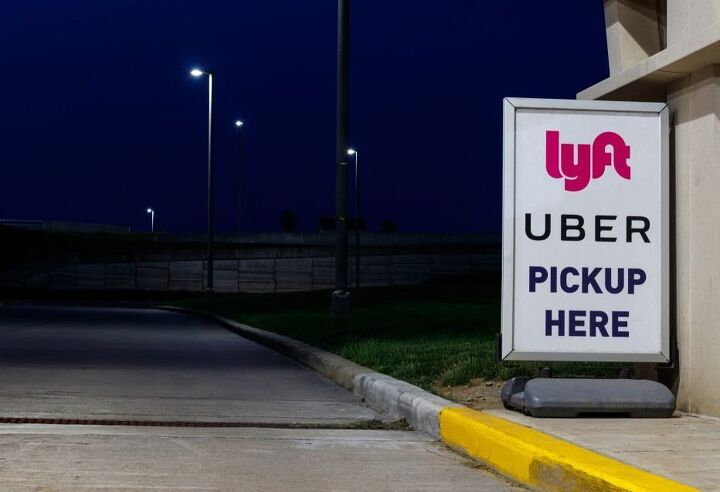














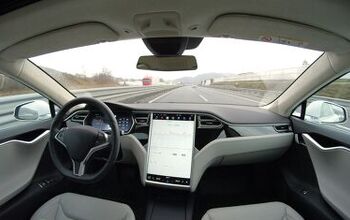
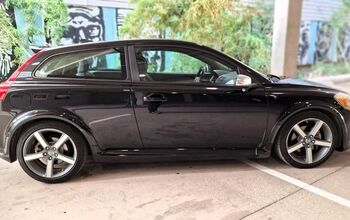




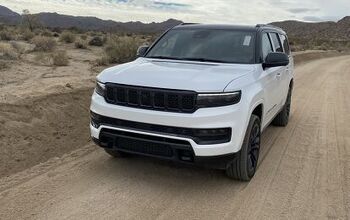
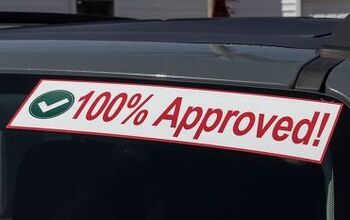
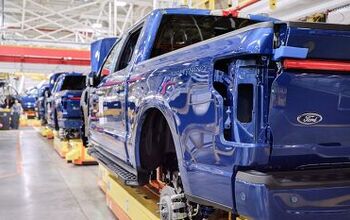



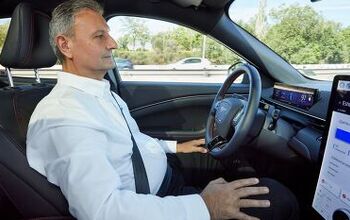


Comments
Join the conversation
NYC Medallions aside, most taxi regs make some sense. License drivers, inspect cars, regulate them...there are real reasons. Uber and Lyft ? Anyone with a license and a car....Just ignore all regulations. Great business model, just ignore regulations and run the workers via algorithm (machine boss), while leveraging other people's equity in vehicles. At least it loses money, so it has that going for it.....which is nice.
No. The fundamental issue is that they are designed to be profitable at Level 5 automation. Is there a zone in which a) drivers are compensated at a level in which Uber/Lyft "contractor" turnover isn't above 100% yr/yr and b) their pricing is competitive with taxis? I don't think there is. There isn't an inexhaustible supply of gullible drivers, which is what their business plans basically specify, and taxi services are already rolling out app-based pickups that mimic the "frictionless" transaction that drew people to the apps in the first place. They are stuck between the proverbial rock (attracting drivers with attractive compensation) and the hard place (taxi services who suddenly find themselves having to compete for fares) and are praying that Level 5 autonomy comes before they have to admit they are an app, a PR department, and the face of a failed social experiment.